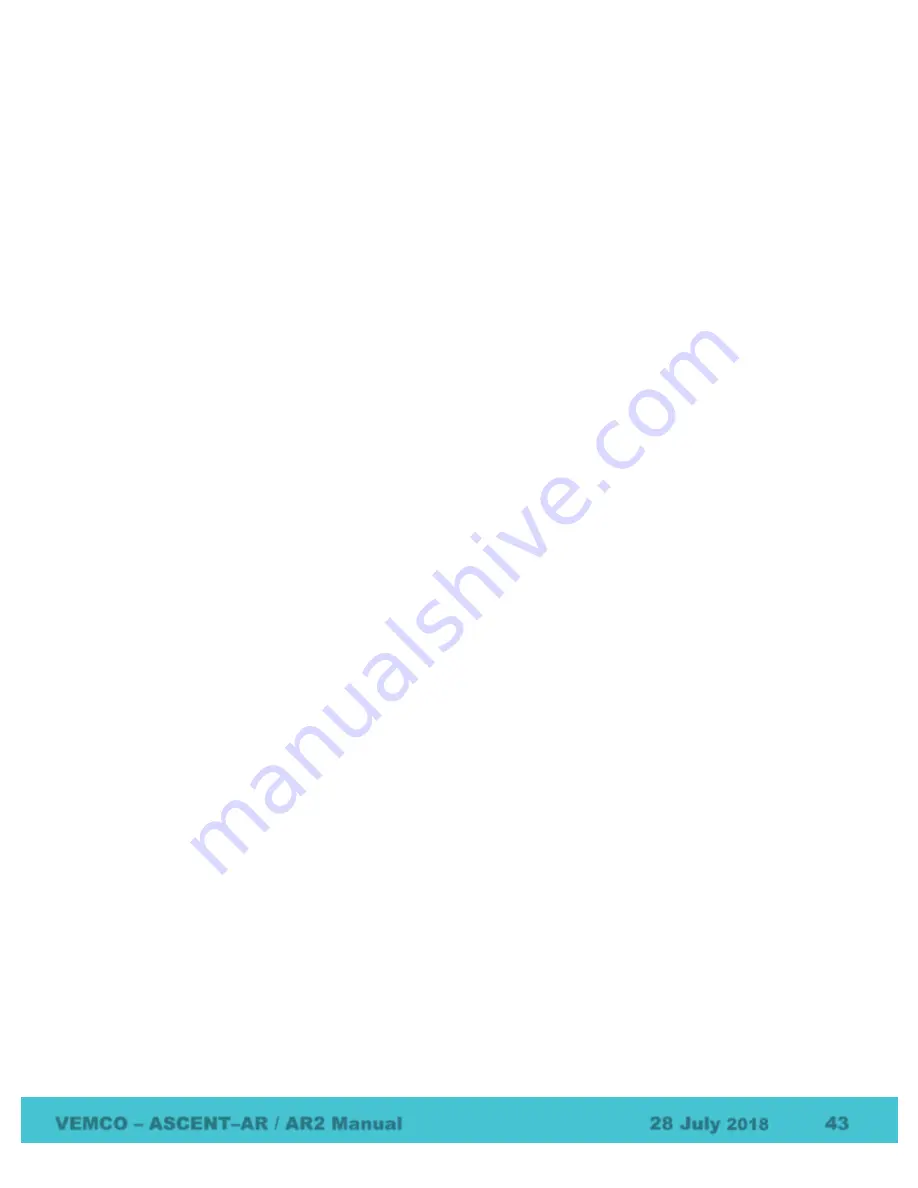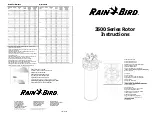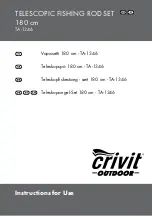
VEMCO – ASCENT–AR / AR2 Manual
28 July
2018
43
7.2
ASCENT-AR related questions
7.2.1
How much range can I expect?
Acoustic range depends on so many factors that it is difficult to estimate without knowledge of the
environment and prior experience with telemetry. Range depends on transmission power, signal absorption,
line of sight, reflection/refraction, multipath and environmental noise (man-made & natural), and the
receiving quality of the release/hydrophone. Typically areas that have clear water, sand or silt flat bottoms
and low current exhibit the greatest ranges. Conversely, areas with turbid water, complex rocky bottom
topography and high current exhibit low ranges. In all cases, extreme weather events and periods of high
wind (waves) may significantly reduce range.
In most cases greater transmission power output (dB) results in greater range. For example, in good
conditions the ASCENT-AR should yield ranges of 800-1200 m. There are some exceptions where high
power and a reflective and low noise environment may cause detection breakdowns.
7.2.2
How long will my ASCENT-AR battery last?
The ASCENT-AR will typically last 14 months on a “D-cell” (AR) and 60 months on a “DD-cell” Tadiran
lithium battery (AR2). An estimation of the remaining battery life is available when acoustically
communicating with the ASCENT-AR through the VR100-200.
TIP:
Write the installation date on the battery so you know how long the battery has been in use.
The AA Lithium battery only powers the release motor and should never need to be removed or disconnected
from the ASCENT-AR.
7.2.3
Does release orientation matter?
The ASCENT-AR must be orientated with the hydrophone looking upwards for communication with the
VR100-200. Also, releases are commonly moored closer to the seafloor than the surface to minimize the
effect of surface noise and conditions.










































